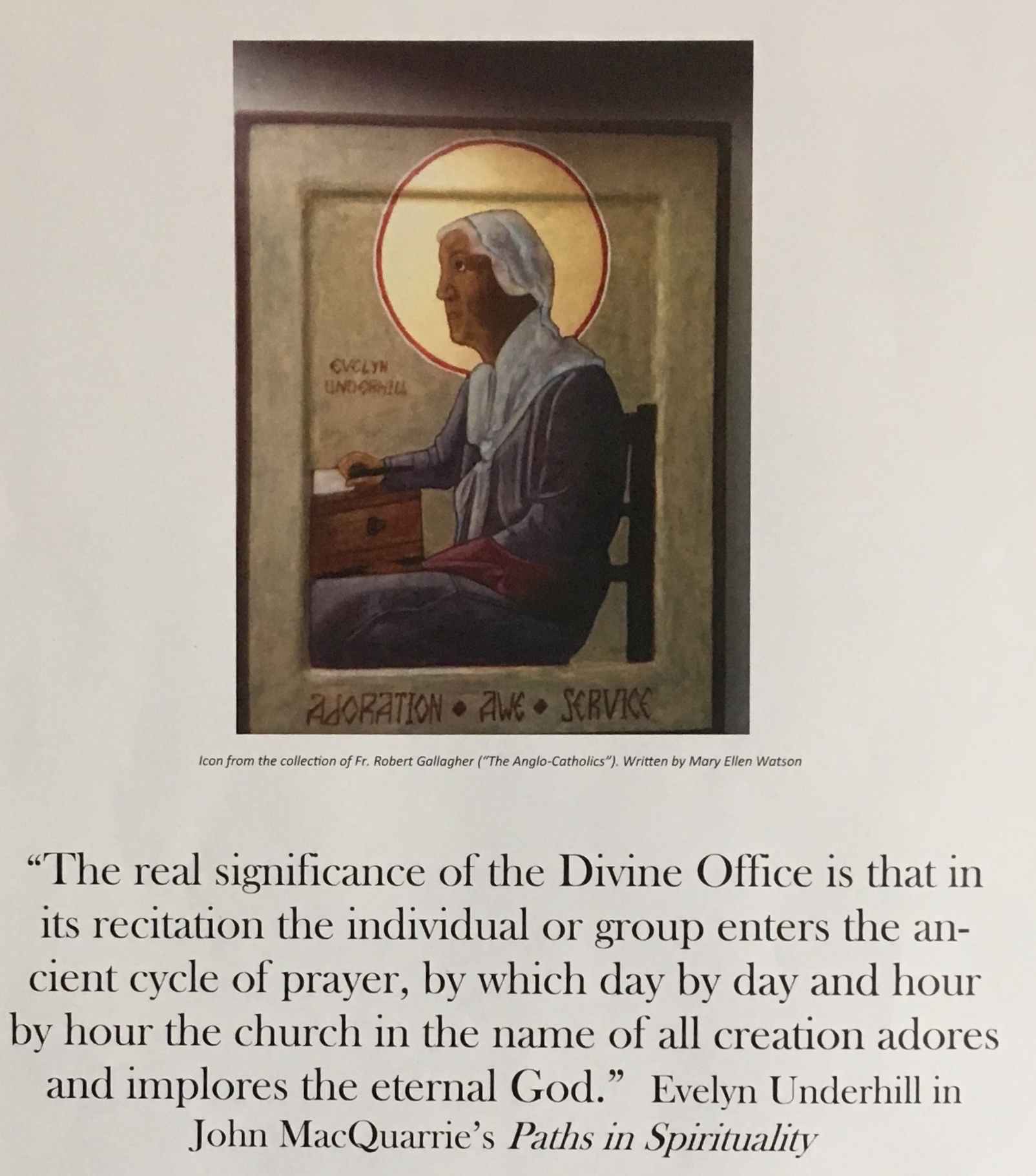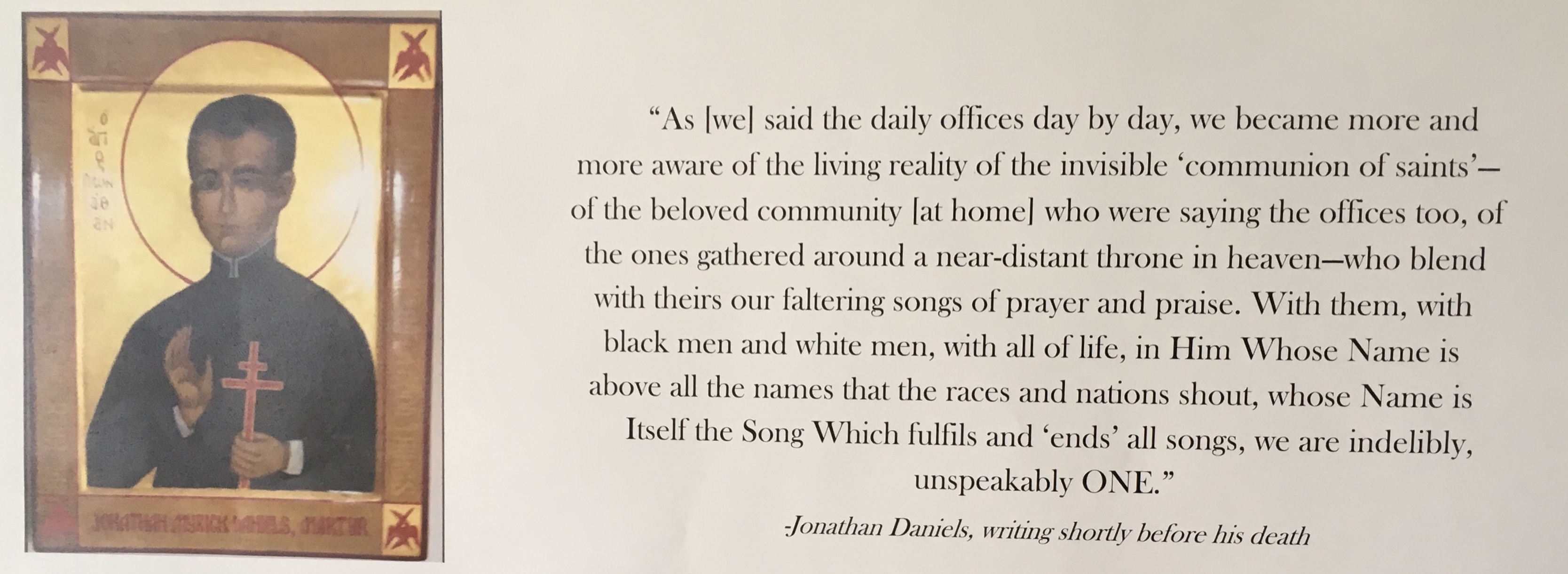 It changes a parish when 20% of the Eucharistic community prays the Daily Office during the week. It changes the Sunday Eucharist. It changes the people. It changes the sense of what we are about and who we are as a parish.
It changes a parish when 20% of the Eucharistic community prays the Daily Office during the week. It changes the Sunday Eucharist. It changes the people. It changes the sense of what we are about and who we are as a parish.
How do you get to that place in a parish? How to you create a critical mass of members who offer the Prayers of the Church each day? What are the steps that can move the parish in that direction?
I had to write up this material for use by priests in the Order of the Ascension who are about to begin offering the program in their own parishes. It might as well be shared more widely. I hope you find it useful.
Here's an overview with some resources for a parish training/coaching program to help people say the Office on their own.
The learning objective
For the participants to identify a way of saying the Daily Office on their own, that has a high level of internal commitment, and that fits their temperament and circumstances.
To do that in a process that helps establish internal commitment by providing adequate and useful information and free choice in deciding what to do.
Four phases
Phase One
A one-hour session in which participants learn how to say the Office. They are provided with options about how they might do the Office.
Phase Two
In between sessions they do the Office on their own using the approach they worked out in the first session
Phase Three
A one-hour session in which they assess how it went? What they learned about themselves and saying the Office. How they intend to do it in the coming week and beyond. Discuss Phase 4; especially the availability of guidance as requested.
Phase Four
The person goes on to say the Office and make such adjustments as seem useful. Makes use of spiritual guidance on the Office from time to time. Could return to participate in the first three phases again as a way of revising and receiving support.
 Ascetical/pastoral insights
Ascetical/pastoral insights
You get to 20% plus saying the Office on their own over a five-year period by doing training and coaching with small groups along the way. Think of the training and coaching as generally taking place in small groups – five this time, four more in the fall, another 2 people in January. On and on, year after year. In time a critical mass has come into being. Avoid the trap of multitudinism and institutionalism.
You are shaping the parish –nurturing the Apostolic Center, what Martin Thornton called the Remnant. See the Shape of the Parish Model. Also, Longing for holiness.
Use the Threefold Rule of Prayer as part of your introducing the program. You want them to understand the Office as part of a pattern of spiritual practice -- Sunday Eucharist, Daily Office, Reflection/Personal Devotions that fit your temperament and circumstances. A handout.
It doesn’t usually happen spontaneously. You need to offer the training program every year in some form. In the first few years you need to offer it three times/year. After five or six years you’re doing it for new members and the occasional seeker of renewal because of some change within.
Take care to not suggest to people that there is a narrow, correct way. We suggest you focus on the essentials. And for some people simply encouraging them to do an absolute minimum – help them to see themselves as participating in the daily prayers of the church; that can grow over time into something more substantial.
An outline of the training design for the sessions of phases 1 and 3
You want to have alignment among three elements: the learning objectives, the group gathering for training, and the training design. You are also seeking to maximise the person's internal commitment -- that's most effectively done by building the base of useful information and free choice in the training/coaching process. Here's a PDF on Daily Office: Parish Educational and Training Programs.
Handouts and worksheets: Threefold Rule of Prayer, Daily Office: Spectrum of Use, Saying the Daily Office on Your Own, Daily Office Worksheet, Assessing Your Use of the Daily Office (for the second session, Phase 3)

Training design outline:
In the first session (Phase 1) you want to focus participants on making decisions about how they will do the Office in the coming week. Watch out for your tendency to over-teach. They need enough information to make decisions. They don't need the history of the Office. Walk them through the "Daily Office: Spectrum of Use" worksheet. Explain the options on the sheet and note that these are just examples. Use the other worksheets -- presenting material that explains what's on the sheets. Then allow them to fill out the sheets and discuss what they have recorded.
In the second session (Phase 3) you want them to share what they have done and what they feel and think about that. Use the worksheet "Assessing Your Use of the Daily Office." Allow time for them to talk. Ask questions. Possible return to the work from the first sessions. Some may want to revisit the spectrum of use.
Materials you'll need: Easel and pad, markers, blue tap, handouts, copies of the Book of Common Prayer, pre-done work on the newsprint of scales you'll want people to make use of.
Alternatives: There are other ways that you can help people connect with the Daily Office. Here are two.
1. Conduct the Anglican Spirituality course designed by Michelle Heyne, OA. It makes use of Michelle's book In Your Holy Spirit: Traditional Spirtual Practices in Today's Christian Life. A PDF of the educational design. The course has been used in many parishes throught the country. A related worksheet.
2. Conduct a pre-Lent program on Having a Rule of Life. Do it every year. Use worksheets to help people reflect on their current rule and how they live it and to consider ways in which they may want to revise the rule. A second worksheet.
Supplemental approaches: Two ideas.
1. Exposing members to the possibility of a relationship with one of the church's religious orders can be a compelling step into proficiency in the Christian life. It provides a broader community of prayer within which we say the Daily Office. Many orders have associates or oblates. A program that places in people's hands brochures on having a rule of life based in being an Associate has proven very meaningful for many people.
In the Anglican Communion there are approximately 165 religious orders and communities for men and/or women. Around 35 are in the United States. Some live in residential community as brothers and sisters, others are dispersed communities that gather from time to time for retreat, community life, and learning. Some provide retreat houses and individual spiritual guidance. Each community has a rule of life and is committed to a life of common prayer and service.
If the parish has members who are already associates of a religious order you may want to have them speak briefly about their own experience - no selling of their community though!
Some examples: Order of the Ascension; Order of the Holy Cross; Order of Julian of Norwich; Companions of Saint Luke; Society of Saint John the Evangelist; Community of Saint John Baptist; Society of St Margaret; Saint Gregory's Abbey
2. A panel of parishioners who already say the Office. This could be a helpful feeder into the four-phase training we've suggested. Hearing from others who say the Office can inspire. It's also an appropriate setting for parishioners to ask questions that come prior to participating in a program to actually learn how to do it. You can ask the panel questions like: What is the Daily Office, I've never heard of it? Isn't it a form of prayer appropriate for monks and nuns but not for most Christians? Could you say something about the history of the Office? What are it's Biblical roots? Panels may be useful in addressing what and why question, whereas the training program is addressing "how"? It's best to give each its space.
A few cautions. Those presenting need to have an openness to ways of doing the Office that differs from their own; a narrow or rigid approach is likely to create an emotional resistance in the group. You may also want to have a panel that has a range of practice. However, you don't want someone who wants to argue against saying the Office. This isn't an academic debate.
Keep in mind -- someone who has said the Office for many years may be right for the panel but tottally inappropriate for training and coaching others in saying the Office.
Background website resources: Useful for those training and coaching. Some may be useful to share with participants.
DAILY OFFICE SYNERGY
DAILY OFFICE: THE PRIORITY OF WORSHIP
THE OFFICE: DAILY, THE HOURS
INTRODUCING THE DAILY OFFICE INTO A PARISH'S DNA
PARISH DEVELOPMENT RESOURCES: EPISCOPAL ETHOS, THE DAILY OFFICE
DAILY OFFICE: PARISH - INDIVIDUAL – CATHEDRAL – MONASTIC - SEMINARY
A LIFE, NOT A PROGRAM
Additional material will be added to this posting in the coming days.
rag+